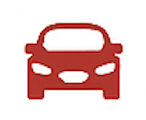Australia's Unique Automotive Identity and Cultural Legacy
Origins of Car Culture in Australia
Car culture in Australia dates back to the early 20th century when motor vehicles first appeared on the continent. The vast distances between towns and cities made the automobile a practical necessity rather than a luxury. By the 1920s and 1930s, car ownership began to rise among Australians, particularly in rural areas where public transport was scarce and unreliable.
During the post-World War II boom, the car became a symbol of freedom, prosperity, and national identity. Manufacturing ramped up locally, with companies like General Motors-Holden and Ford establishing major production facilities. Holden's 1948 release of the FX, Australia's first domestically produced car, marked a major cultural milestone and the beginning of widespread car ownership in the country.
The Importance of the Holden Legacy
Holden, originally a saddlery business, evolved into an Australian automotive icon by becoming the first company to produce cars domestically. Its influence on Australian car culture was profound. The Holden Commodore, introduced in 1978, became a staple on Australian roads and held a deep emotional connection with many families.
Holden's rivalry with Ford created a powerful brand dichotomy that shaped consumer loyalty. The fierce loyalty to Holden or Ford became part of Australian identity, especially in motorsports. When Holden ceased domestic manufacturing in 2017 and the brand was retired in 2020, it marked the end of a significant era for Australian automotive heritage. Enthusiasts continue to restore and collect Holden models, ensuring the brand's cultural presence endures.
Utes and Their Role in Rural and Urban Life
The utility vehicle, or 'ute,' is a distinctly Australian automotive innovation. Invented in the 1930s, the ute was designed to meet the needs of farmers who wanted a vehicle that could serve both personal and professional uses. Its practical design and rugged capabilities made it indispensable for life on the land.
Over time, the ute transitioned from a rural workhorse to an urban cultural icon. Modified utes became staples at car shows, known for elaborate paint jobs, massive sound systems, and lowered suspensions. The ute's dual identity—functional and expressive—reflects broader themes within Australian car culture that celebrate both utility and individuality.
Ute musters, like the famous Deniliquin Ute Muster in New South Wales, draw thousands of participants annually. These events celebrate rural life, car pride, and community spirit, combining vehicle showcases with concerts, camping, and contests. The ute's status in Australian culture is comparable to the pickup truck in the United States, symbolizing self-reliance and national pride.
The Role of Motorsports in Australian Car Identity
Motorsports have played a defining role in shaping Australia's car culture. The Bathurst 1000, held annually at Mount Panorama in New South Wales, is arguably the most iconic racing event in the country. Nicknamed 'The Great Race,' it has historically featured the intense Holden vs. Ford rivalry and continues to draw passionate fans.
Other motorsports, such as the Supercars Championship, drag racing, and rallying, also have significant followings. These events are not just about racing—they are social and cultural experiences that bring communities together. Many Australians grow up watching races with their families, making motorsports a multi-generational tradition.
Grassroots motorsports are also popular, with local drag strips and speedways giving amateur drivers a chance to compete. Events such as Summernats in Canberra combine high-octane car exhibitions, burnout competitions, and car parades, showcasing the creative and technical skills of car modifiers and builders across the nation.
Car Modification and Enthusiast Communities
Custom car culture is deeply ingrained in Australia's automotive landscape. From hot rods and muscle cars to Japanese imports and European tuners, enthusiasts across the country invest time and resources into modifying vehicles for performance, aesthetics, or both. Street meets, cruises, and car clubs allow like-minded individuals to share their passion and skills.
Despite increasing restrictions on modifications and hooning laws in some jurisdictions, the enthusiast community remains vibrant. Online forums, social media groups, and dedicated events help sustain interest and innovation. Australia's isolation has also led to unique regional modification trends, with influences from the U.S., Japan, and Europe blending with local preferences.
Car Ownership, Urban Sprawl, and National Infrastructure
Car ownership in Australia remains one of the highest in the world, with over 19 million registered vehicles for a population of about 26 million. This is partly due to the country's geographic layout and the spread of its population. Outside of central business districts in major cities, public transportation options are often limited, reinforcing car dependency.
Suburban development patterns in cities like Sydney, Melbourne, and Brisbane have also influenced this reliance. Large distances between homes, schools, and workplaces make the car the most viable mode of transport for most residents. Efforts to invest in public transport continue, but private vehicle use remains dominant.
Infrastructure projects like extensive highway systems, tunnel networks, and regional road upgrades reflect Australia's ongoing commitment to supporting automotive transportation. However, rising fuel prices, environmental concerns, and traffic congestion in urban centers are beginning to shift discussions toward sustainable alternatives and more integrated transit planning.
The Growing Interest in Electric Vehicles
Australia has been slower to adopt electric vehicles (EVs) than many other developed nations, but interest has grown rapidly in recent years. Factors such as declining battery costs, increased model availability, and government incentives are contributing to the change. Major cities are expanding charging infrastructure to accommodate growing demand.
While EV adoption still faces challenges—particularly in rural and remote areas—the shift is seen as inevitable. Brands like Tesla, BYD, and Polestar are entering the market with increasing visibility. Australian manufacturers and startups are also exploring opportunities in EV technology, including battery recycling and solar vehicle development.
